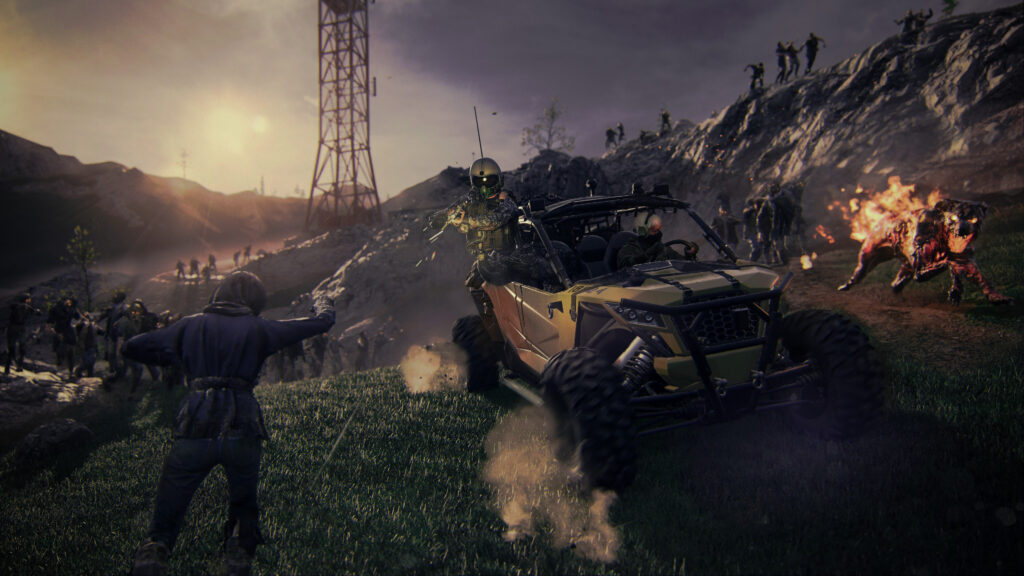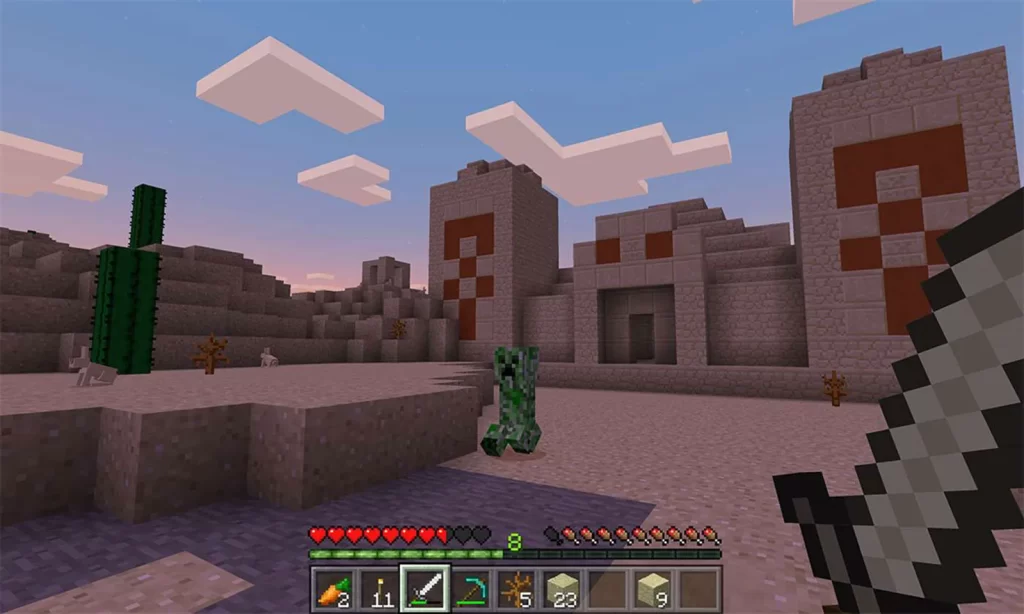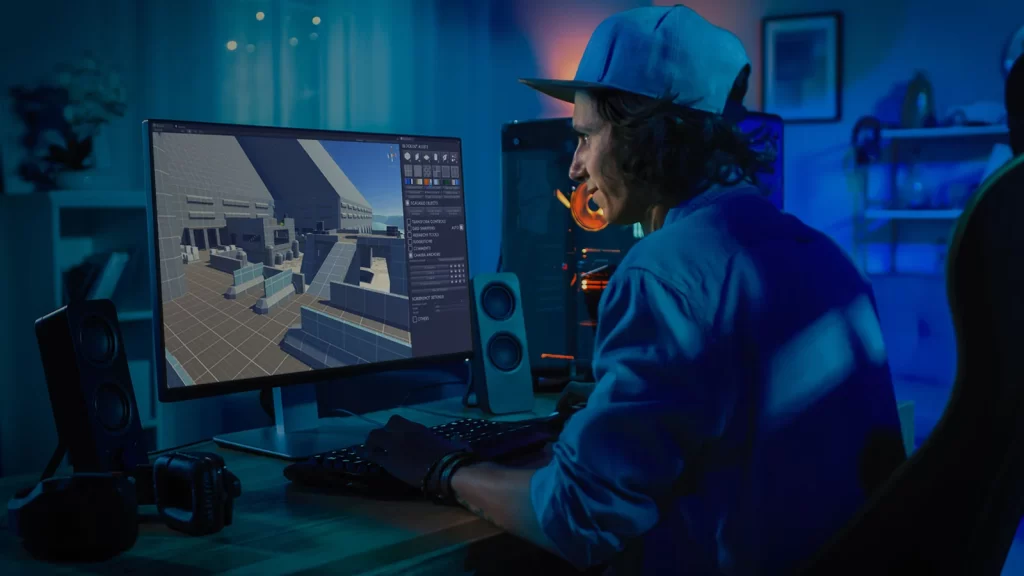Creating a successful video game involves a combination of engaging gameplay, captivating storylines, and (strong emphasis here) immersive visuals. One crucial element that contributes to the overall gaming experience is the art design – so knowing how to choose an art style for a game is very important for the creation process and the consequential reputation of a digital experience.
The art style sets the tone, evokes emotions, and leaves a lasting impression on players. It can be the entire driving force and selling point behind a game. An innovative art style can make a game stand out in the competitive market that is the world of video games.
In this article, we will explore the key considerations and steps to help you choose an art style for a game.
Read as well: How to make an isometric game – Key considerations
How to choose an art style for a game

Understand the game’s theme and genre
The first step in choosing an art style for your game is to understand its theme and genre. Each genre and theme necessitates a unique and tailored visual approach to effectively immerse players in the intended experience.
Take, for instance, the horror genre, where the ambiance and visuals play a crucial role in eliciting fear and suspense. Opting for dark and atmospheric visuals, coupled with strategic use of shadows and eerie lighting, can significantly heighten the immersive quality of the game.
This choice creates an environment that keeps players on the edge of their seats, enhancing the overall impact of the horror narrative.

On the other hand, a whimsical adventure game demands a completely different visual treatment. Vibrant and colorful graphics become instrumental in bringing the fantastical and lighthearted elements to life.
Bold, cheerful hues and imaginative designs contribute to a visually engaging world, setting the tone for exploration and discovery. This approach not only aligns with the genre but also ensures that players are captivated by the game’s charm and playfulness.
It’s imperative to consider the emotions you aim to evoke in players and the message you wish to convey with your game. The chosen art style acts as a silent communicator, influencing the player’s emotional response and connection to the narrative.
Delve into the subtleties of your game’s storyline and characters, as well as the overarching atmosphere you want to establish. By doing so, you empower yourself to make informed decisions that not only align with the thematic elements but also resonate deeply with your target audience.
It’s also worth exploring the synergy between gameplay mechanics and art style. Striking a balance between visual aesthetics and interactive elements ensures a seamless and immersive gaming experience.
The art style should complement and enhance the overall gameplay, contributing to a cohesive and memorable journey for the players.

Define your target audience
Understanding your target audience is a fundamental aspect of how to choose an art style for a game. The preferences of diverse age groups and demographics can significantly influence the visual appeal of your creation.
If your objective is to engage a younger audience, opting for a vibrant, cartoony, and playful art style may prove to be the most effective. The use of bold colors, exaggerated proportions, and whimsical elements can captivate the imaginations of children and create a visually stimulating experience.
But if your target demographic comprises a more mature audience, a nuanced and sophisticated approach may be required. Realistic or stylized art styles with intricate details can resonate better with the discerning tastes of an older demographic, providing a more immersive and visually satisfying experience.
To make informed decisions about your art style, thorough market research is essential. Explore the preferences and expectations of your target audience through surveys, focus groups, or social media interactions.

Analyzing the artistic trends and successful examples within your target demographic can also provide valuable insights into the visual language that resonates with them.
Consider as well the cultural and regional nuances that may affect your audience’s artistic preferences. Different cultures may have varying interpretations of aesthetics, symbolism, and color palettes. Adapting your art style to align with these cultural sensibilities can enhance the relatability and attractiveness of your project to specific demographic groups.
Evaluate technical constraints and resources
Of course, having a clear idea of the technical constraints and the available resources at your disposal is a very important step in how to choose an art style for a game.
Take into account the technical limitations of the platform. Different platforms, such as consoles, PCs, or mobile devices, may have varying capacities for rendering graphics, processing power, and memory.

It’s essential to align your chosen art style with the platform’s capabilities to ensure optimal performance and a seamless gaming experience. For instance, a highly detailed and graphically intensive art style might be better suited for a high-end gaming PC than a mobile device with limited processing power.
Consider the proficiency and resources of your development team. The chosen art style should be within the scope of their skills and expertise.
Some art styles may demand advanced tools and techniques that your team might not be familiar with or have access to. In such cases, opting for a more achievable art style that aligns with the team’s capabilities ensures a smoother development process and better overall results.
Budgetary constraints also play a pivotal role in shaping your decision – you see, certain art styles may require expensive software, licenses, or additional resources.
Evaluate the financial aspects of each art style and choose one that fits within your budget while still meeting the visual goals of your game. This consideration is especially important for indie developers or smaller studios with limited financial resources.

How to choose an art style for a game: final tips
Choosing the right art style for your game is a significant creative decision that requires careful consideration. By understanding the theme, defining your audience, and evaluating technical constraints, you can unlock the full potential of your game’s visual identity.
You can also analyze successful games in your genre and similar themes to gain inspiration. Look at how they have executed their art styles and understand the reasons behind their choices. This research can help you identify trends and uncover what resonates with players.
Don’t be afraid to experiment with different art styles during the early stages of development. Create prototypes or concept art to visualize how each style complements your game. Solicit feedback from your team and potential players to gauge their reactions.
Finally, ensure that the chosen style is cohesive across all visual elements, including characters, environments, and user interfaces. A consistent art style enhances immersion and creates a unified and memorable gaming experience.
We here at Main Leaf have been working in the video game development industry for the past 12 years, so all these tips come from the experience that knowing how to choose an art style for a game is a fundamental first step of any project.
If you like this article, check out our blog, where we discuss many other subjects relating to the game development universe.

